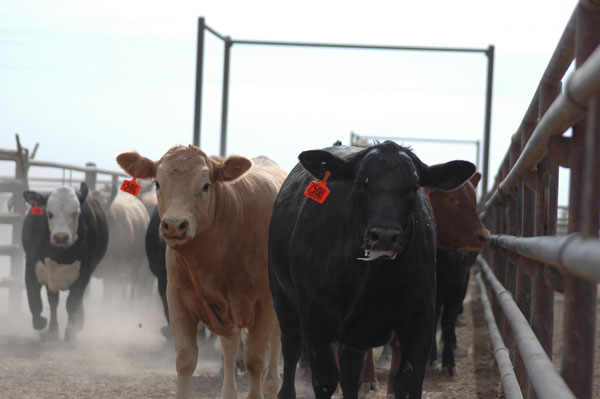Transparency pays for beef producers
April 3, 2016

Flying beneath the radar of public attention is certainly appealing with so many special-interest knotheads looking for a bone to pick.
“Going forward, we have to get out from under the radar,” says Jerry Wulf of Wulf Cattle at Morris, Minn. “We have to fly above the radar and tell our story every day. Consumers want to know where their food comes from.”
“Consumers want to know how their beef is produced,” says John Schroeder, manager of Darr Feedlot Inc. at Cozad, Neb. “They want to know that it’s sustainable.”
Wulf and Schroeder were part of a panel at the Cattlemen’s College sessions during the Cattle Industry Convention in San Diego in February.
Unlike 1992, when consumers lost confidence in beef when E. coli was discovered in hamburger, Schroeder explains consumer concerns today often revolve around technologies used in production. In his own experience, he says such concerns disappear when consumers understand why the technologies are utilized, and more importantly, that producers are controlling how they’re used.
“We have to step up as an industry like we did in 1992 and deliver confidence to the consumer,” Schroeder says.
Based on the quarterly meetings Wulf Cattle has with the packers it supplies — including representatives close to the final customer — these are some of the things Wulf believes could become reality within the next decade:
reduced usage of antibiotics, by as much as 90%
more beef brands with a story
documented production processes (BQA, handling)
efforts to lessen the industry’s carbon footprint
increasing pressure on the use of implants and beta agonists
more beef industry alignment
Both Wulf and Darr might be corporations from a legal standpoint, but they began and end with family.
Darr began in 1982 when five farm and ranching families purchased a feedlot with a 3,000-head capacity. They’ve grown it into two feedlots with a combined capacity of 50,000 head.
Innovation and meticulous management are common themes. How many other feedlots do you know where their veterinarians and veterinary staff are also the processing crew?
Many associate the Wulf name with Limousin cattle. But Wulf points out that they were cattle feeders before they were cattle breeders. His late father, Leonard, began the family business 60 years ago with the idea of adding value to his crop by feeding cattle. They added the genetic component to their program in order to produce better-quality calves for their feedlot. Today, Wulf is a supplier of NHTC and all-natural cattle to one of the nation’s largest beef packers. It has operations in Minnesota, South Dakota and Nebraska.

BEEF Seedstock 100 List
Looking for a new seedstock provider? Use our UPDATED Seedstock 100 listing to find the largest bull sellers in the U.S. Browse the list here.
The folks at Wulf Cattle and Darr understand all of the discomforting things about becoming more transparent and sharing their stories. That includes the fact that most folks brought up in this business were taught modesty and humility from an early age. For each of these outfits, though, listening and sharing is the foundation of adding value.
At Darr, for instance, every head has an electronic tag matched to source identification. The operation insists on receiving carcass data from the packer. It continues honing a system by which it can provide feedback to its calf suppliers, while it discovers how it can better serve its packer customers and, ultimately, the consumer.
Wulf Cattle extends the information loop a step further back into production, as it shares feedlot and carcass information with the bull customers supplying it with calves and then uses the information to fine-tune the genetics it offers.
Listening and sharing. That’s the gateway to adding value.
You might also like:
March cattle markets In like a lamb and out like a lion
Why the USDA suspension of the midyear Cattle report is troubling
Seven keys to ranch profitability
3 key production areas that contribute to ranch-level sustainability
Photo Tour: World's largest vertically integrated cattle operation
You May Also Like


.png?width=300&auto=webp&quality=80&disable=upscale)
